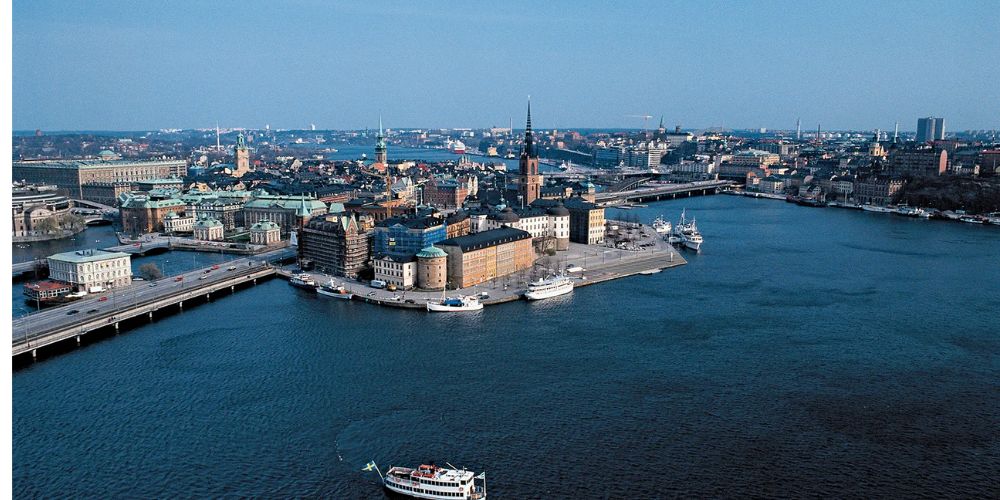Despite being often referred to as a “socialist state,” researchers claim that Sweden’s society has turned into one of the most unequal nations in the entire world.
In his latest book, Greedy Sweden: How People’s Home Turned Into a Paradise for the Super-Rich, Andreas Cervenka, one of Sweden’s most well-known and award-winning business journalists, contends that “socialist Sweden” has evolved into a paradise for the super-wealthy.
A period in Sweden’s history when socialism and capitalism coexisted is referred to as the “people’s home” in this phrase.
Sweden, according to Cervenka, has developed into one of the most “unequal societies in the world,” with alarming amounts of debt.

Everything, in Cervenka’s opinion, suggests that a severe financial crisis will occur sooner rather than later.
According to research by Credit Suisse Research, there are currently 1,095, up from the 28 billionaires who were officially registered in the nation in 1996, as reported by Le Monde.
According to Oxfam’s 2022 Commitment to Reducing Inequality (CRI) Index, Sweden’s standing in terms of inequality has declined 10 places, from 10 to 20, over the past two years.
This puts the nation far behind its Scandinavian neighbors, the CRI’s most recent study showed in October.
Sweden ranked first in the world in 2017 for reducing economic inequality, but since the Nordic nation has slipped further in every Oxfam report.
The CRI concluded that Sweden is far from being an egalitarian society and that the income and poverty disparity is widening.
So according to Suzanne Standfast, secretary-general of Oxfam Sweden, Sweden is one of the OECD nations “where economic inequality has expanded to the greatest extent in recent decades.”
She stated that one of the reasons for this is that labor income is taxed more heavily than capital income.
In other words, Standfast continued, “those with lower incomes pay a higher percentage of tax than those with bigger assets.”
1. Increasing poverty
The welfare state that was established in Sweden in 1932 has long served as a symbol of the “middle way” and has helped to narrow social divides.
Masoud Kamali, a co-author of the book Neoliberalism, Nordic Welfare States and Social Work Current and Future Challenges, told Anadolu that this began to change in the 1990s after the fall of the Soviet Union when the Swedish Social Democrats began to adapt to the US-led neoliberal policies of the World Bank and International Monetary Fund.
He added that there had never been more households with people living below the poverty line.
Kamali, who is also a renowned sociology and social work professor globally, believes that the neo-liberal policies of privatization, marketization, deregulation, and the loss of the state are to blame for the failure of the Swedish model.
The socio-economic gap has a major impact on education, healthcare, and even the legal system, according to Kamali, who also said that the neo-liberal approach caused societal social insecurity where resource redistribution is not occurring.
Standfast claimed that the country’s election campaign from the previous year failed to address the issue of economic divisions.
She said, “We see no discussion about what these gaps entail for our society and our social development, which we need. Both the UN and the World Bank raise the matter, but Sweden is remarkably quiet.”
2. Global inequality is rising
According to the Oxfam report, the wealth gap between the rich and the poor has grown even globally.
In the report, this was most clear during the Covid-19 crisis, when income inequality increased across the line in most nations.
Yet, the global economy is facing “huge challenges,” according to Daniel Waldenstrom, an analyst at the Research Institute of Industrial Economics (IFN Stockholm), who also told Anadolu that the income distribution in the world as a whole has improved substantially in the last 20 years.
Waldenstrom argues that this is brought about by income increases in China and India, where reforms have allowed millions of people to move from “outright poverty into a more middle-income status.”
As a result, income inequality is now much less severe than it was “say 20 or 30 years ago” on a worldwide scale.
He also highlighted that there is still much room for development in terms of policy, infrastructure, and investment due to the still wide wealth inequalities in many countries.
Yet, Standfast insisted that the index shows that both rich and poor countries “have failed terribly in limiting economic inequality” and that the gap is widening globally.
She continued, “We view this as incredibly concerning, especially given the impending economic downturn.”



